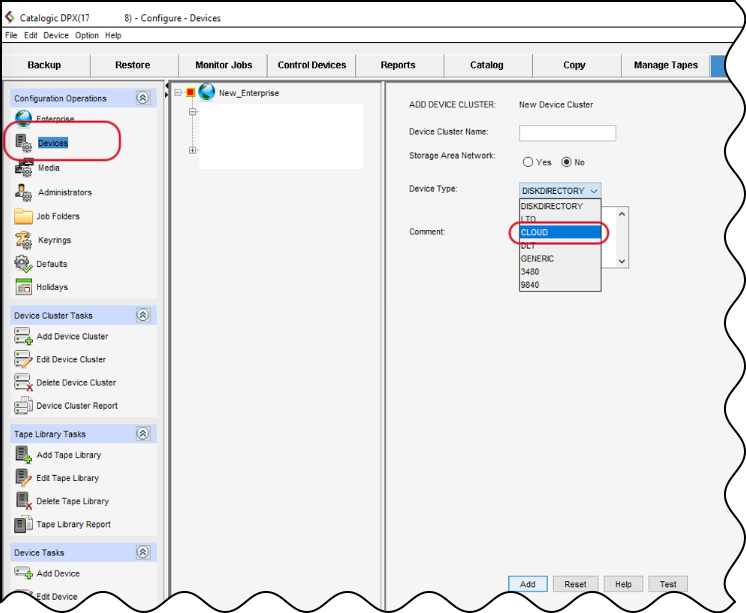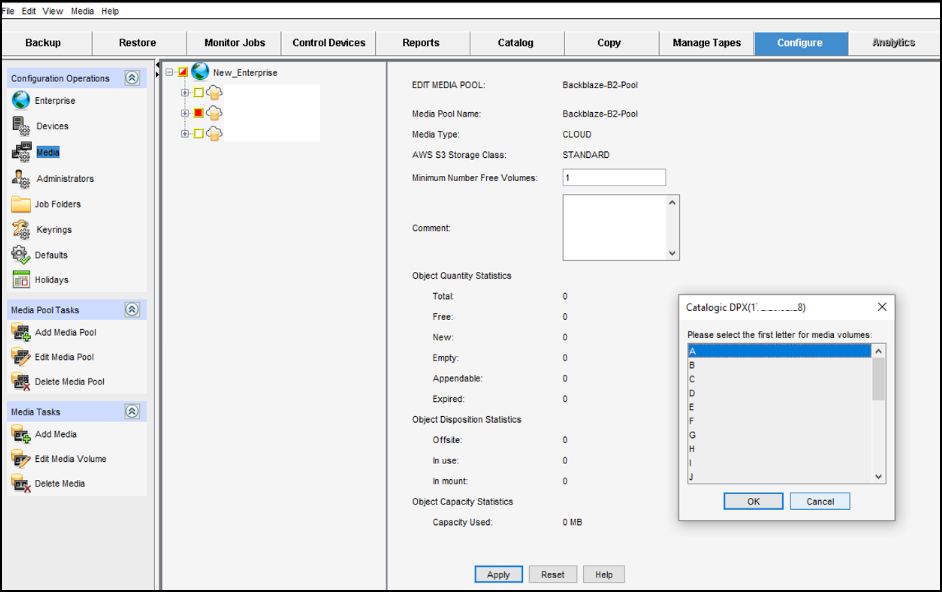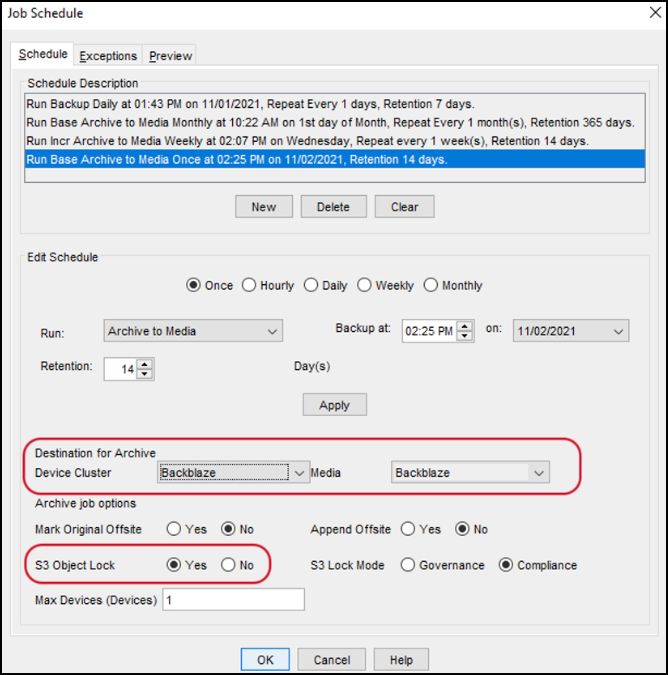- Print
- DarkLight
Catalogic DPX Integration with Backblaze B2
- Print
- DarkLight
Catalogic DPX was designed as a low-impact backup for physical and virtual environments. Backblaze B2 Cloud Storage is an official target for backup data with full support for Object Lock. You can integrate DPX with Backblaze B2 Cloud Storage to protect against data loss and ransomware.
Before you begin: You must download and install Catalogic DPX version 4.8 or higher. You must also set up a Linux or Windows Server Host. For more information, see the DPX Compatibility Guide.
Enable Backblaze B2
Before you begin: You must have a Backblaze B2 Cloud Storage account. If you already have a Backblaze account and the left navigation menu contains a B2 Cloud Storage section, your account is already enabled for Backblaze B2.
- Sign in to the Backblaze web console.
- In the user menu in the upper-right corner of the page, select My Settings.
- Under Enabled Products, select the checkbox to enable B2 Cloud Storage.
- Review the Terms and Conditions, and click OK to accept them.
Create a Bucket
- Sign in to the Backblaze web console.
- In the left navigation menu under B2 Cloud Storage, click Buckets.
- Click Create a Bucket.
- Enter a name for your bucket. Bucket names must be at least six characters and globally unique.
A message is displayed if your bucket name is already in use. - Select a privacy setting: Private or Public.NoteYou can change a bucket's privacy settings at any time.
Files that are in a private bucket require authentication to perform an action, for example, downloading.
Public buckets do not require authentication so you can easily access files. If this is your first time creating a public bucket, complete the following tasks to ensure that you have the correct permissions to create a public bucket:
1. Verify your email address.
2. Have a payment history on file, or use the credit card form to pay a small fee that is credited to your account balance. - If applicable, enable a Backblaze B2 server-side encryption key.
- Enable Object Lock to restrict a file from being modified or deleted for a specified period of time.
- Click Create a Bucket, and copy the value that is in the Endpoint field; you may need this value later.
- Click Lifecycle Settings to control how long to keep the files in your new bucket.
Create an Application Key
- Sign in to the Backblaze web console.
- In the left navigation menu under B2 Cloud Storage, click Application Keys.
- Click Add a New Application Key, and enter an app key name.
You cannot search an app key by this name; therefore, app key names are not required to be globally unique. Key names are limited to 100 characters and can contain letters, numbers, and "-", but not I18N characters, such as é, à, and ü. - Select All or select a specific bucket in the Allow Access to Bucket(s) menu.
- Optionally, select your access type (Read and Write, Read Only, or Write Only).
- Optionally, select Allow List All Bucket Names.
This option is required for the B2 Native API b2_list_buckets and the S3-Compatible API S3 List Buckets operations. - Optionally, enter a file name prefix to restrict application key access only to files with that prefix.
Depending on what you selected in step #4, this limits application key access to files with the specified prefix for all buckets or just the selected bucket. - Optionally, enter a positive integer to limit the time, in seconds, before the application key expires.
The value must be less than 1000 days (in seconds). - Click Create New Key, and note the resulting keyID and applicationKey values.
Add Backblaze B2 as a Storage Device

- Sign in to the DPX Management console.
- Click Configure from the top toolbar, and select Devices under Configuration Operations in the left menu.
- Enter a name for the Backblaze B2 Object Storage Cluster, and select CLOUD as the Device Type.
- Select Backblaze B2 as the Cloud Provider Type.
- Enter the S3 Endpoint that you copied from in a previous task.
- Enter the Region, for example, us-west-002.
- Enter your KeyID and Application Key that you copied from a previous task.
- Enter your bucket name.
- Click Add.
Create a Storage Pool

- Select Media under Configuration Operations in the left menu.
- Select Add Media Pool under Media Pool Tasks in the left menu.
Enter a name for your storage pool. - Select CLOUD as the Media Type.
- Select STANDARD as the AWS S3 Storage Class.
- Enter 1 in the Minimum Number Free Volumes field.
- Click Add.
- Select the starting letter of the media to initialize the pool.
Your media pool and device are now ready for use.
Configure Backup Jobs

- Open a DPX backup job definition.
- Navigate to the schedule tab, and select the Backblaze B2 device cluster and media pool to add an archive schedule.
- To make your backup immutable, enable S3 Object Lock and enable S3 Lock Mode.
Your backup job is now set to replicate to Backblaze B2 cloud storage in an immutable fashion.
